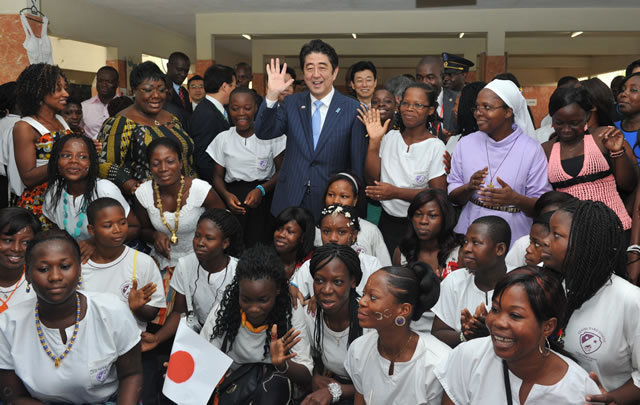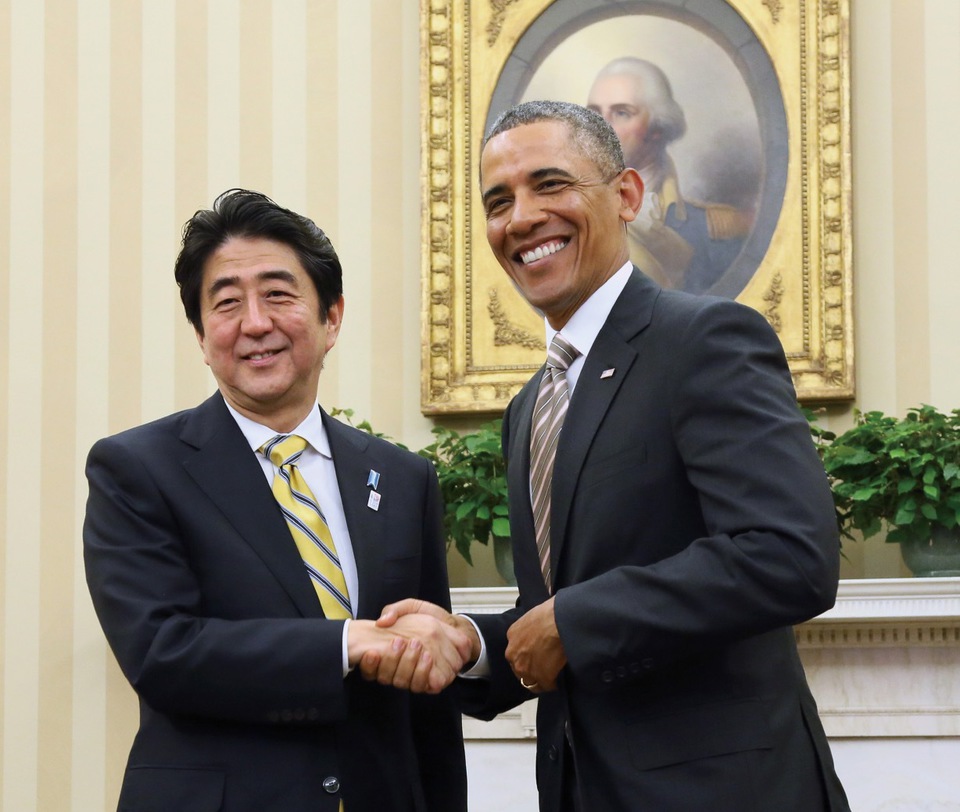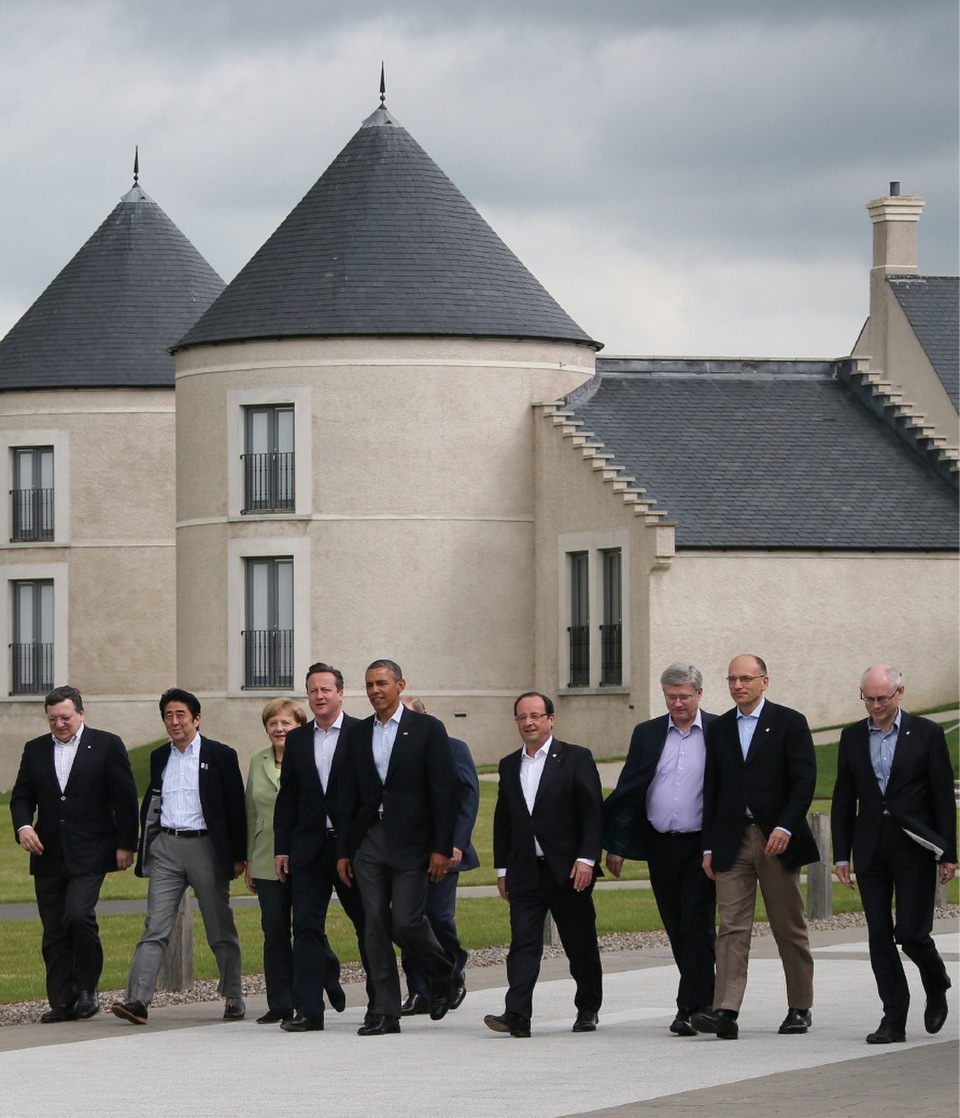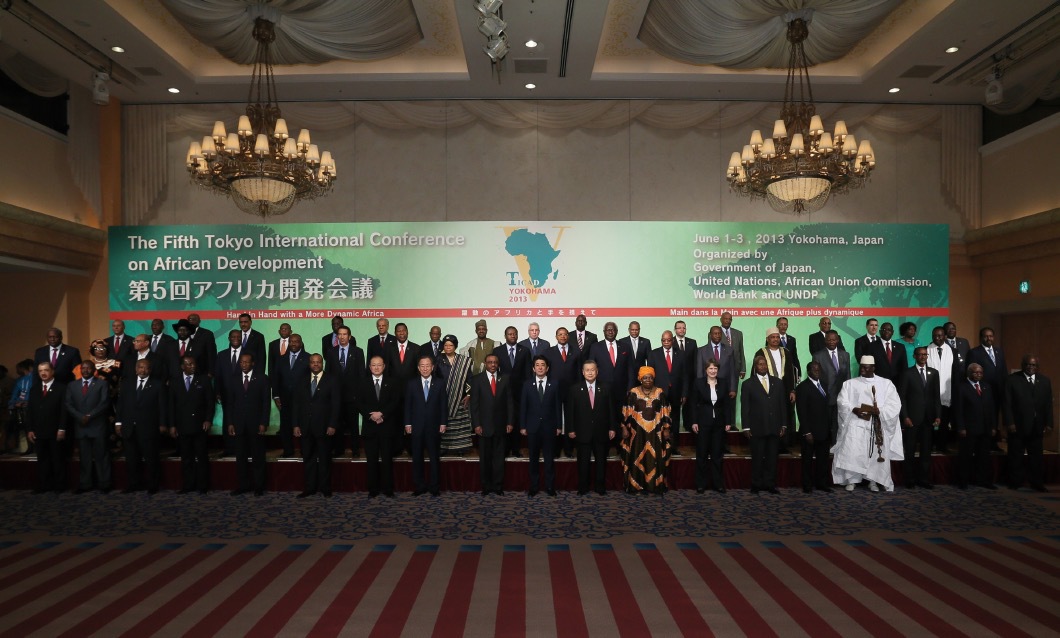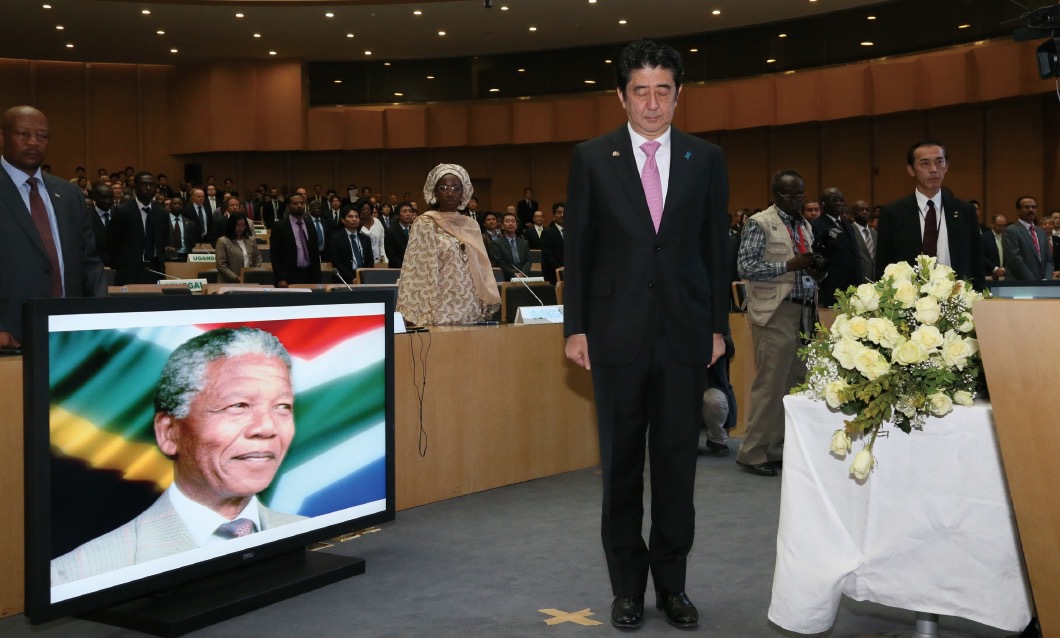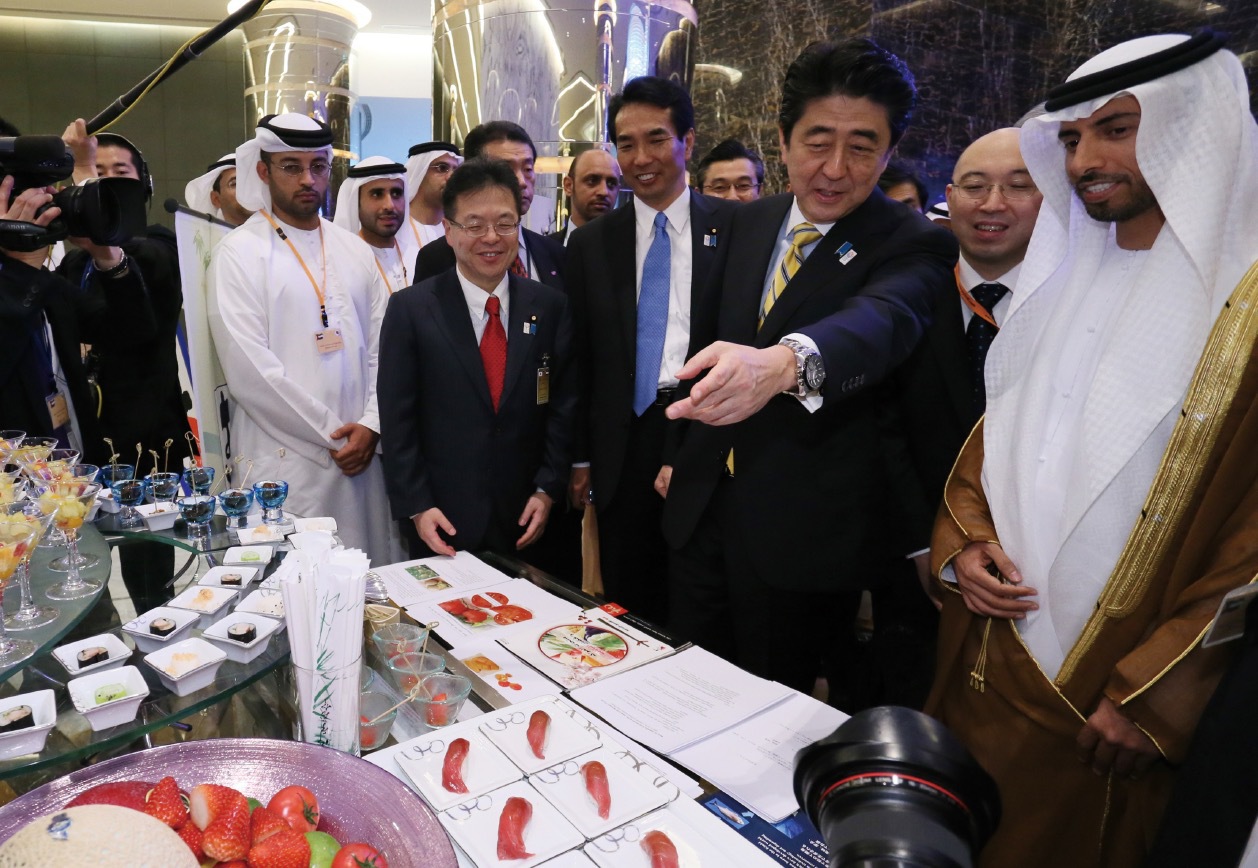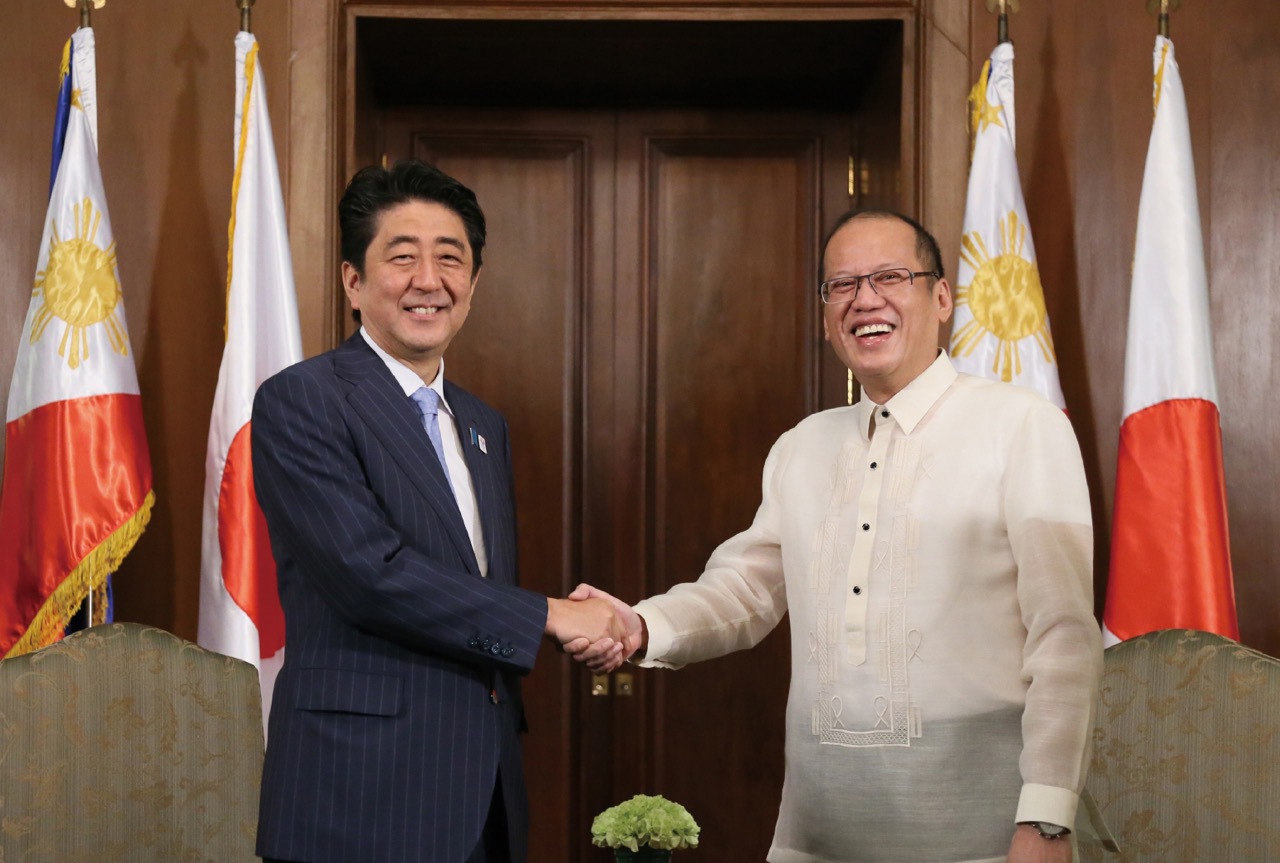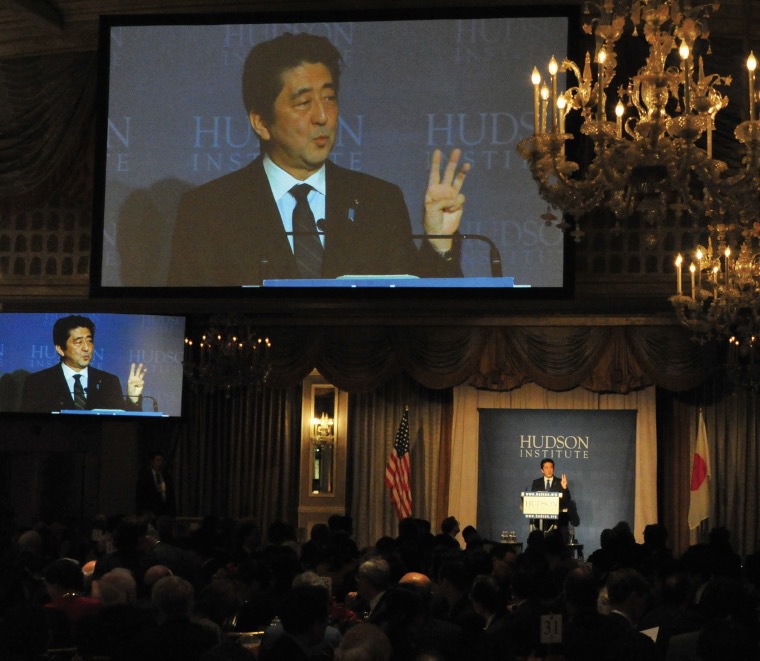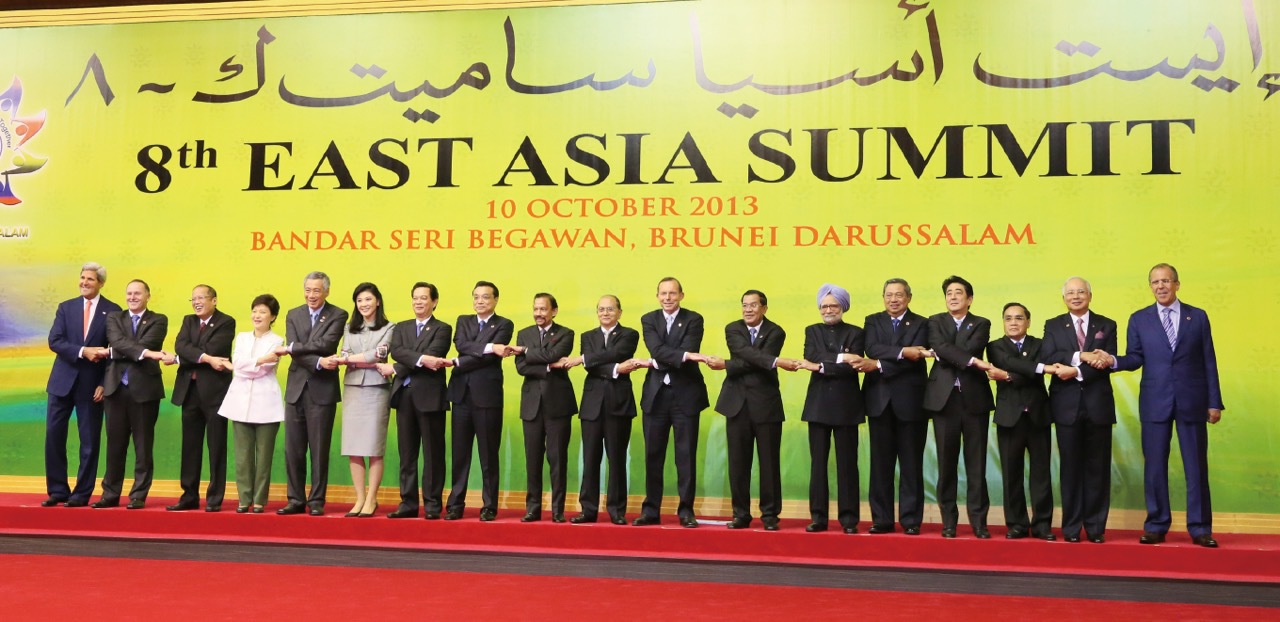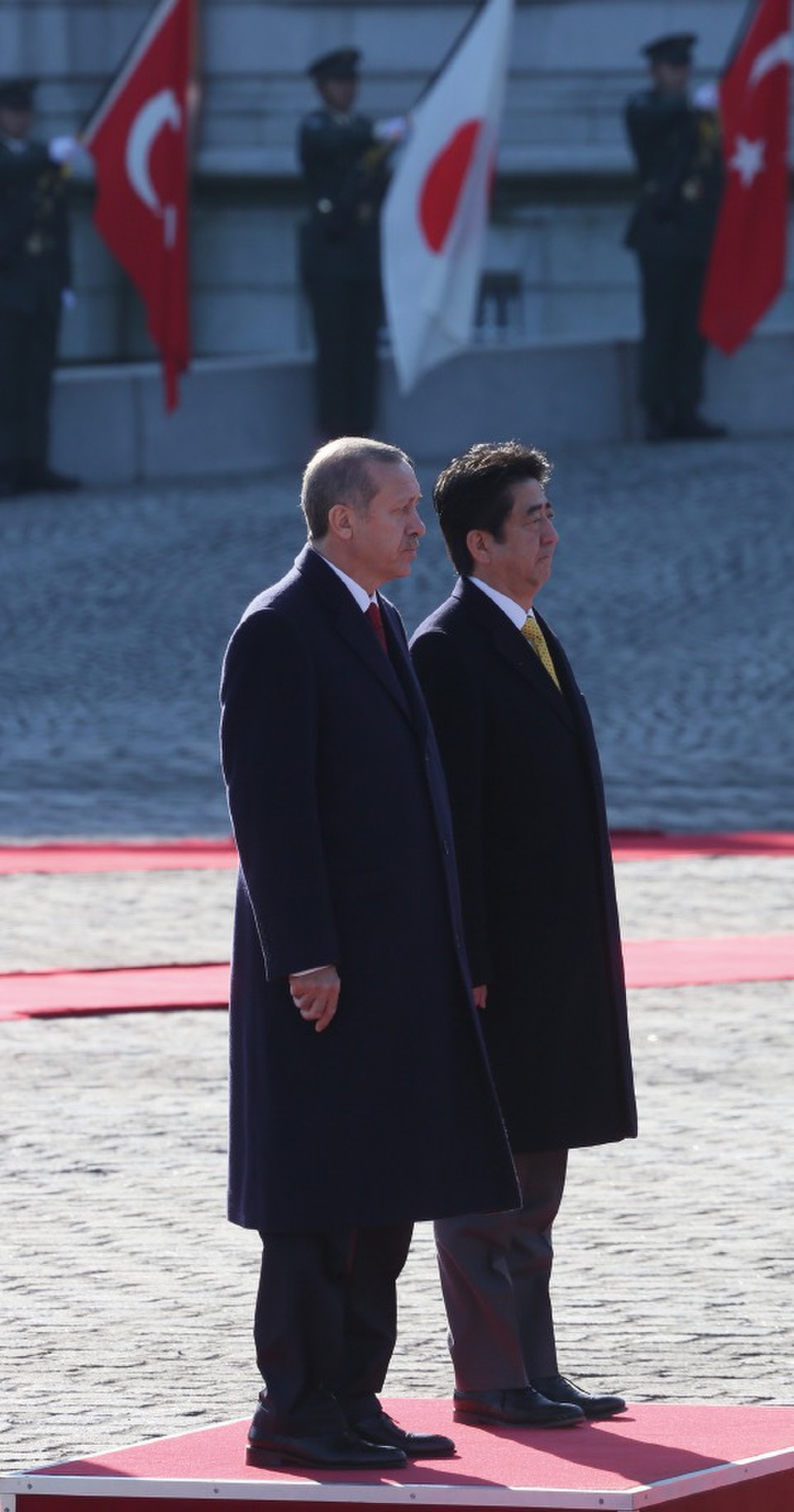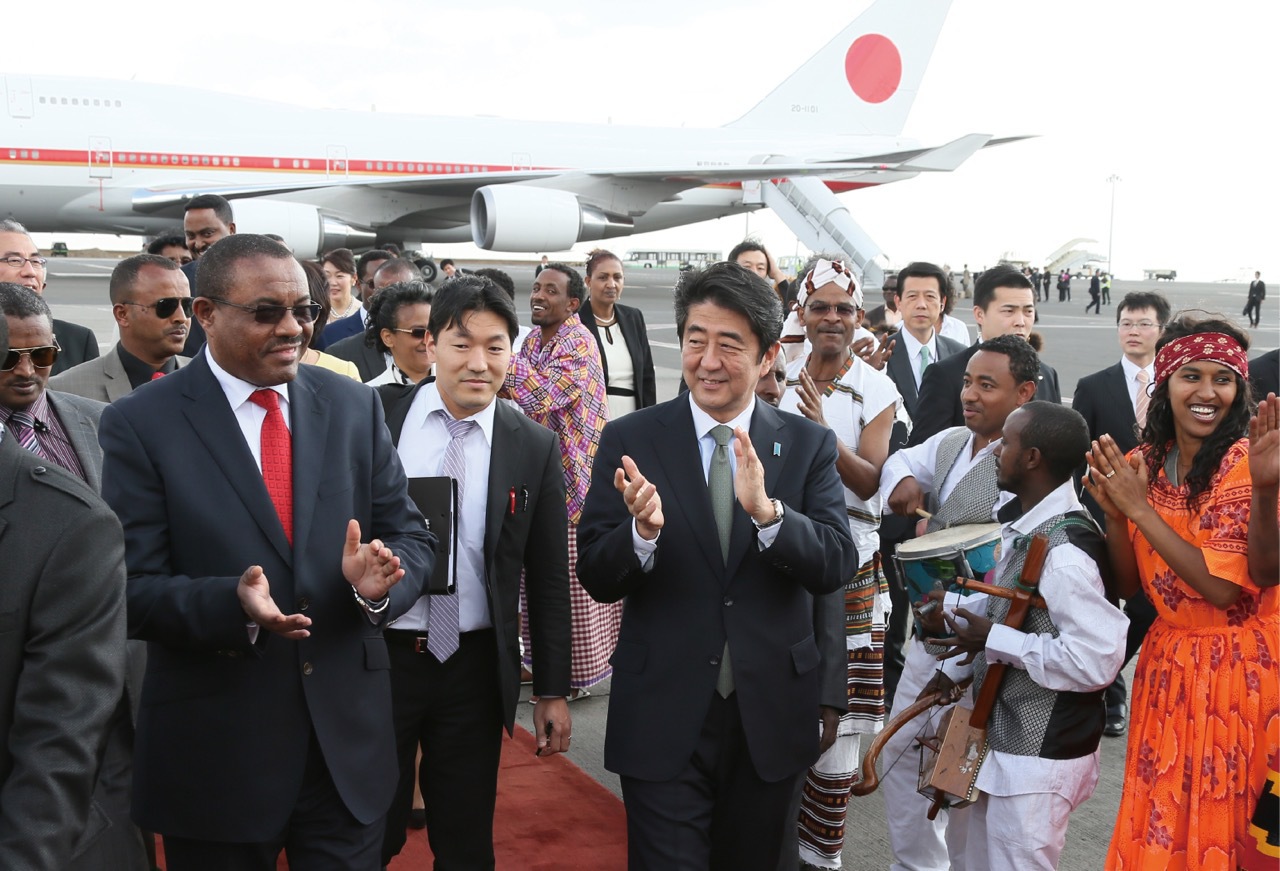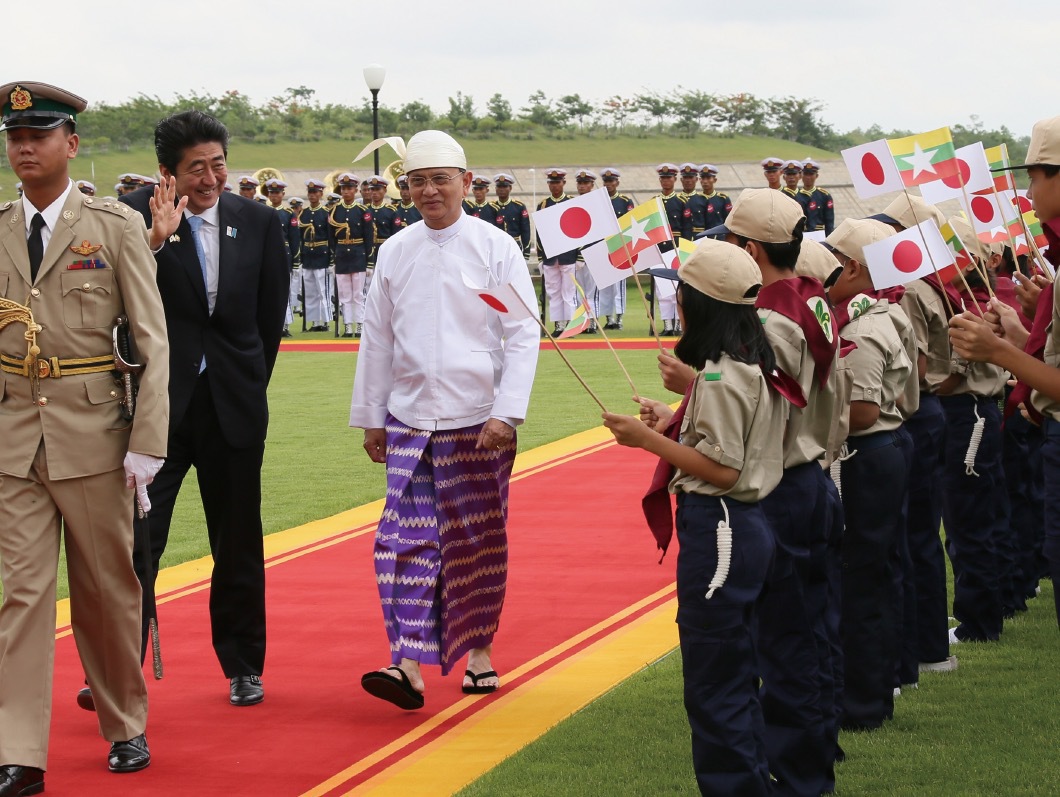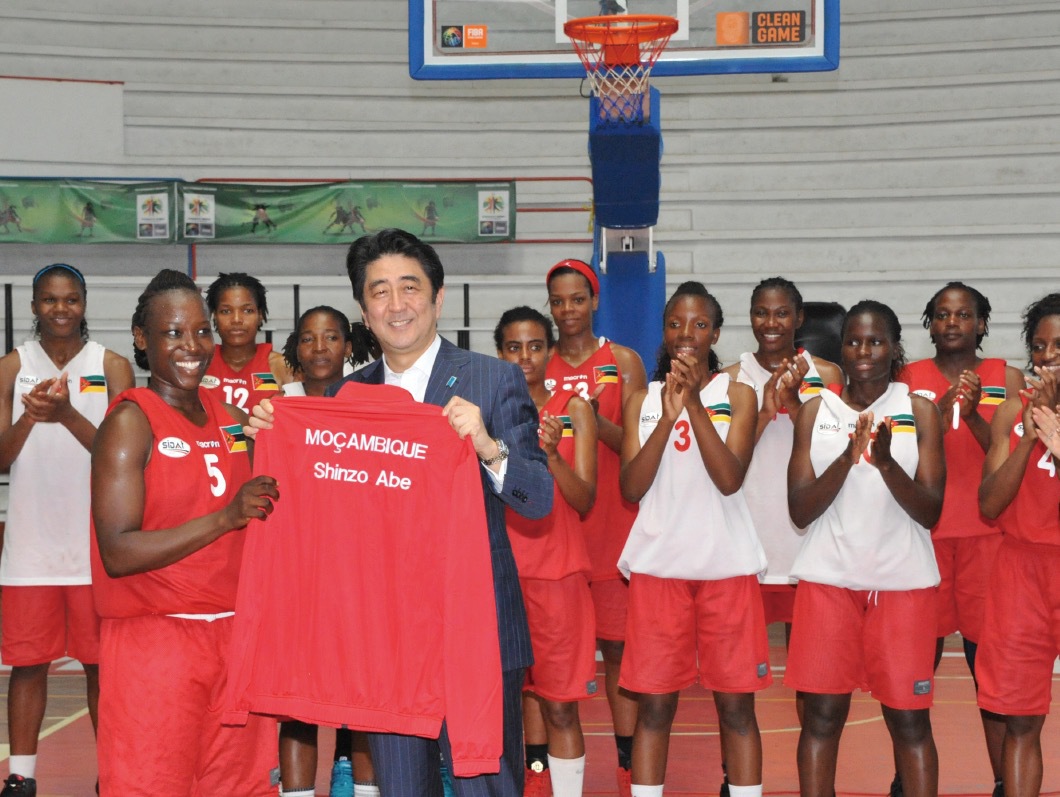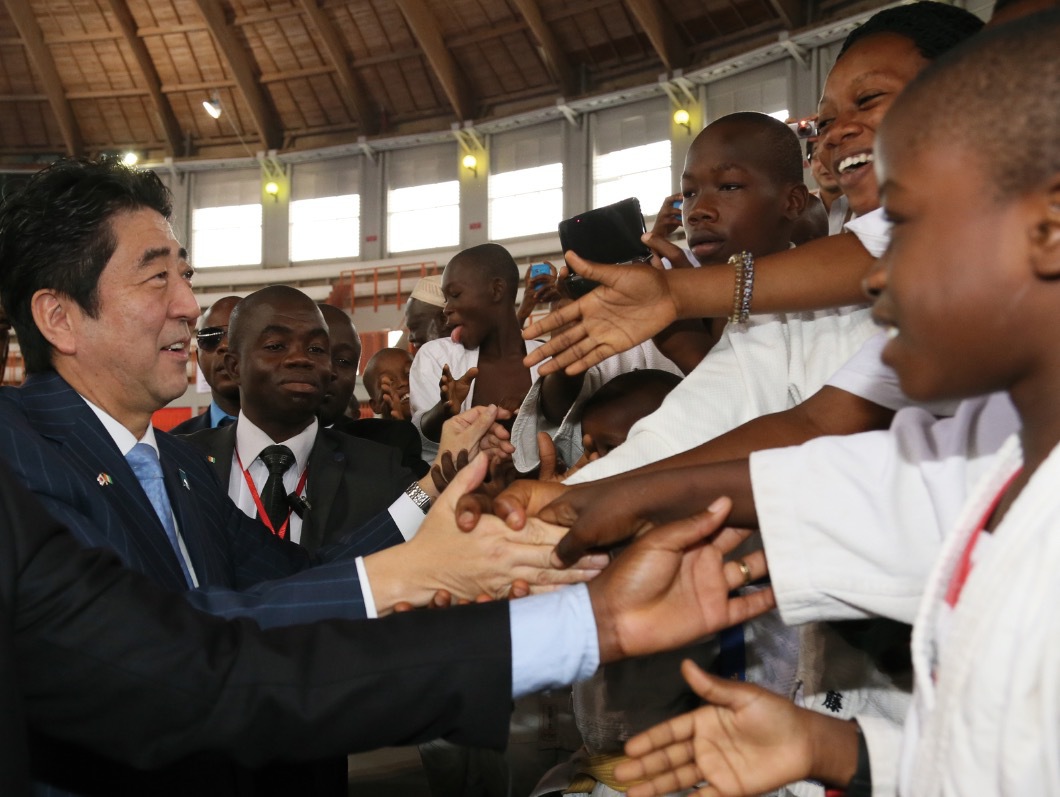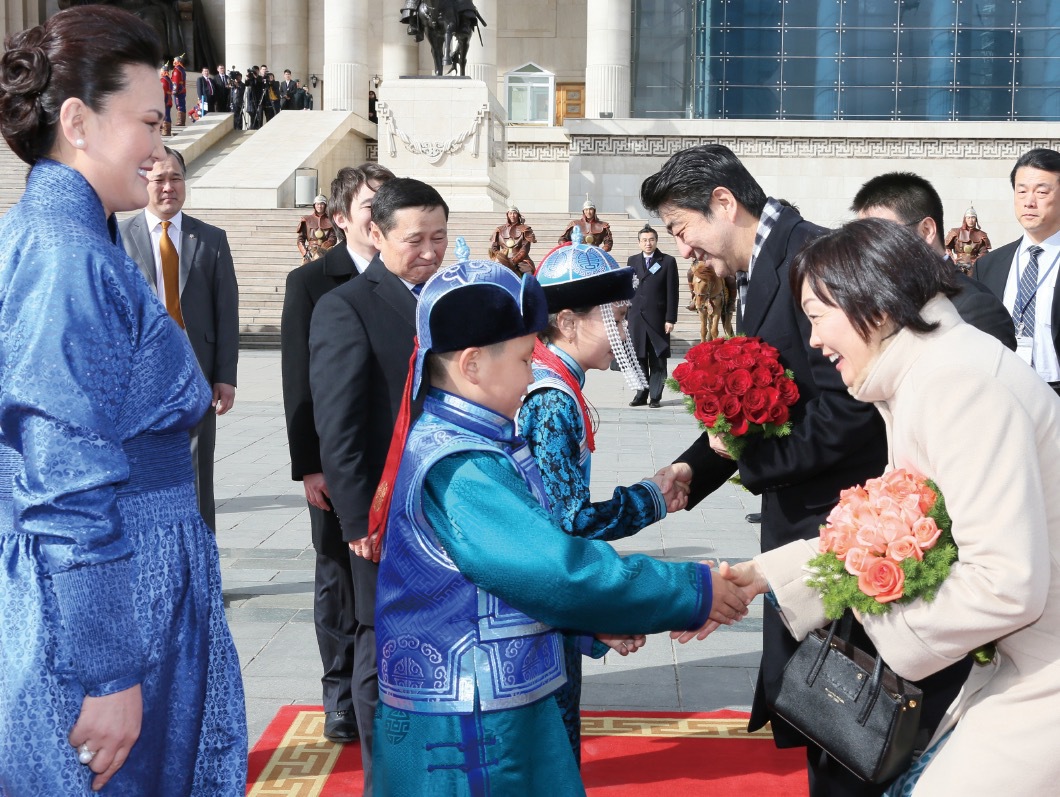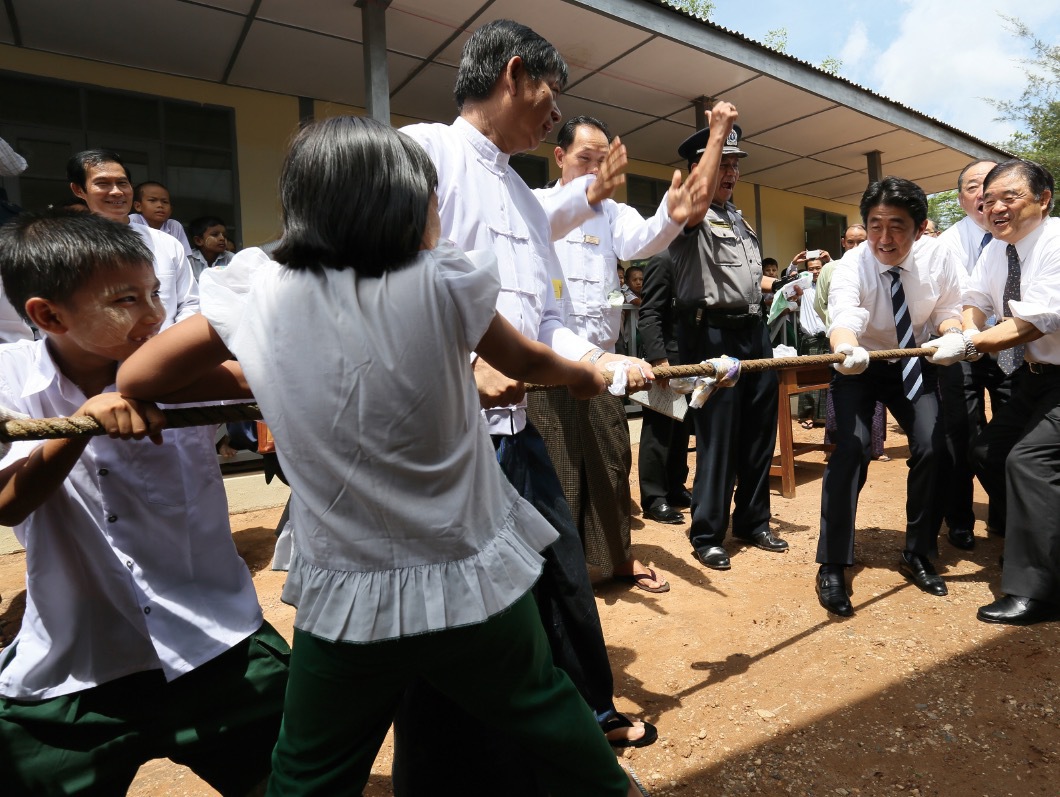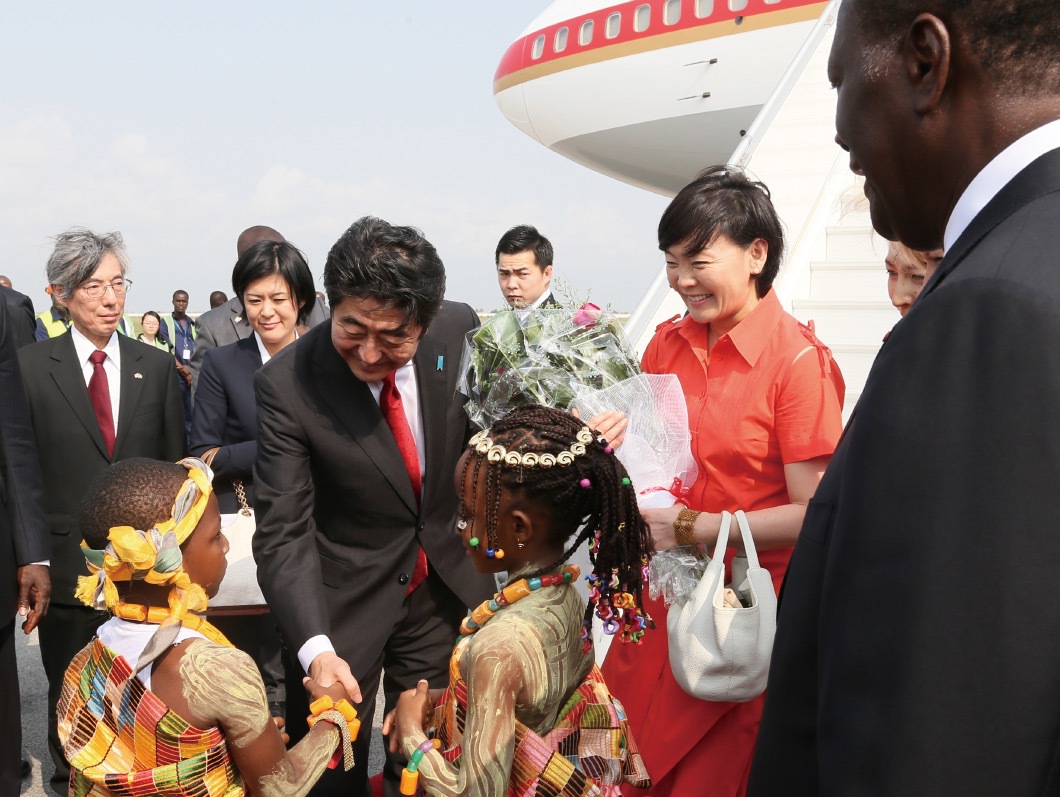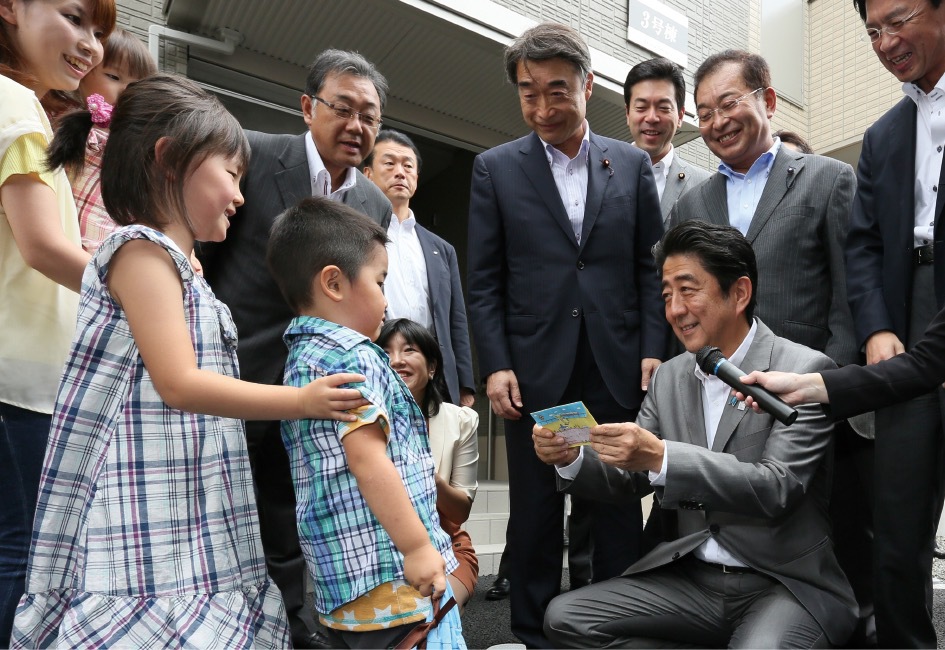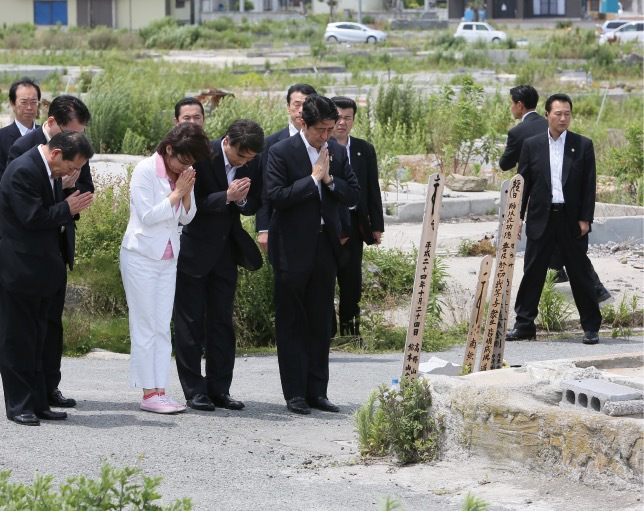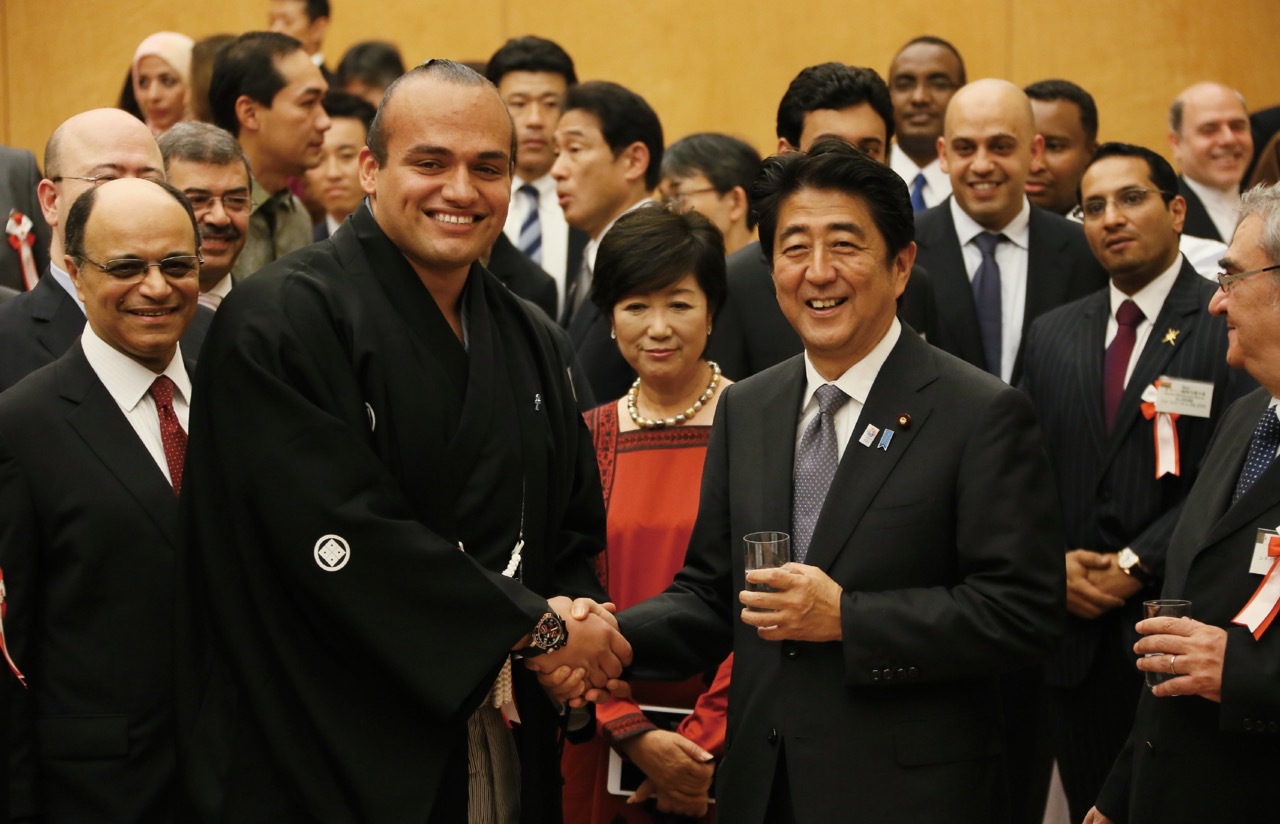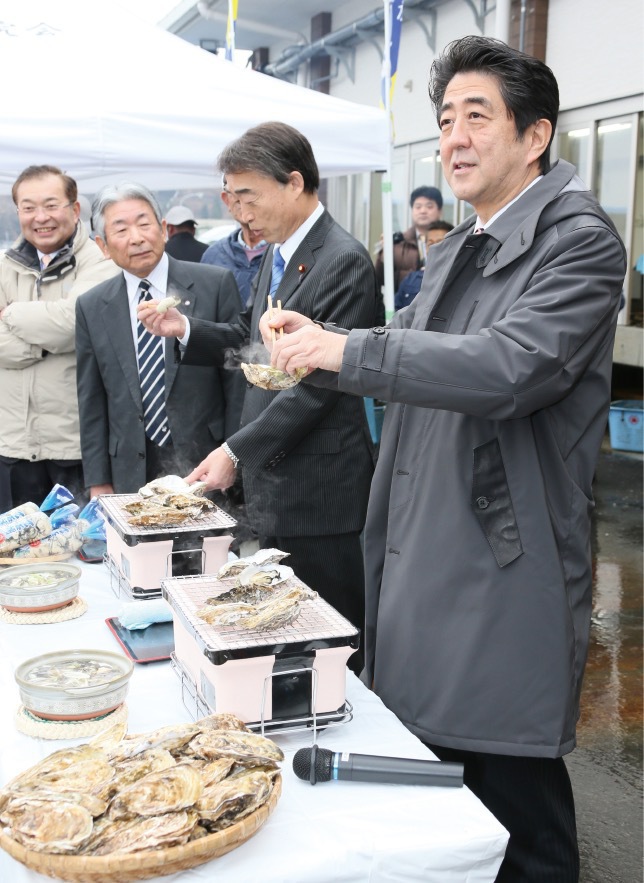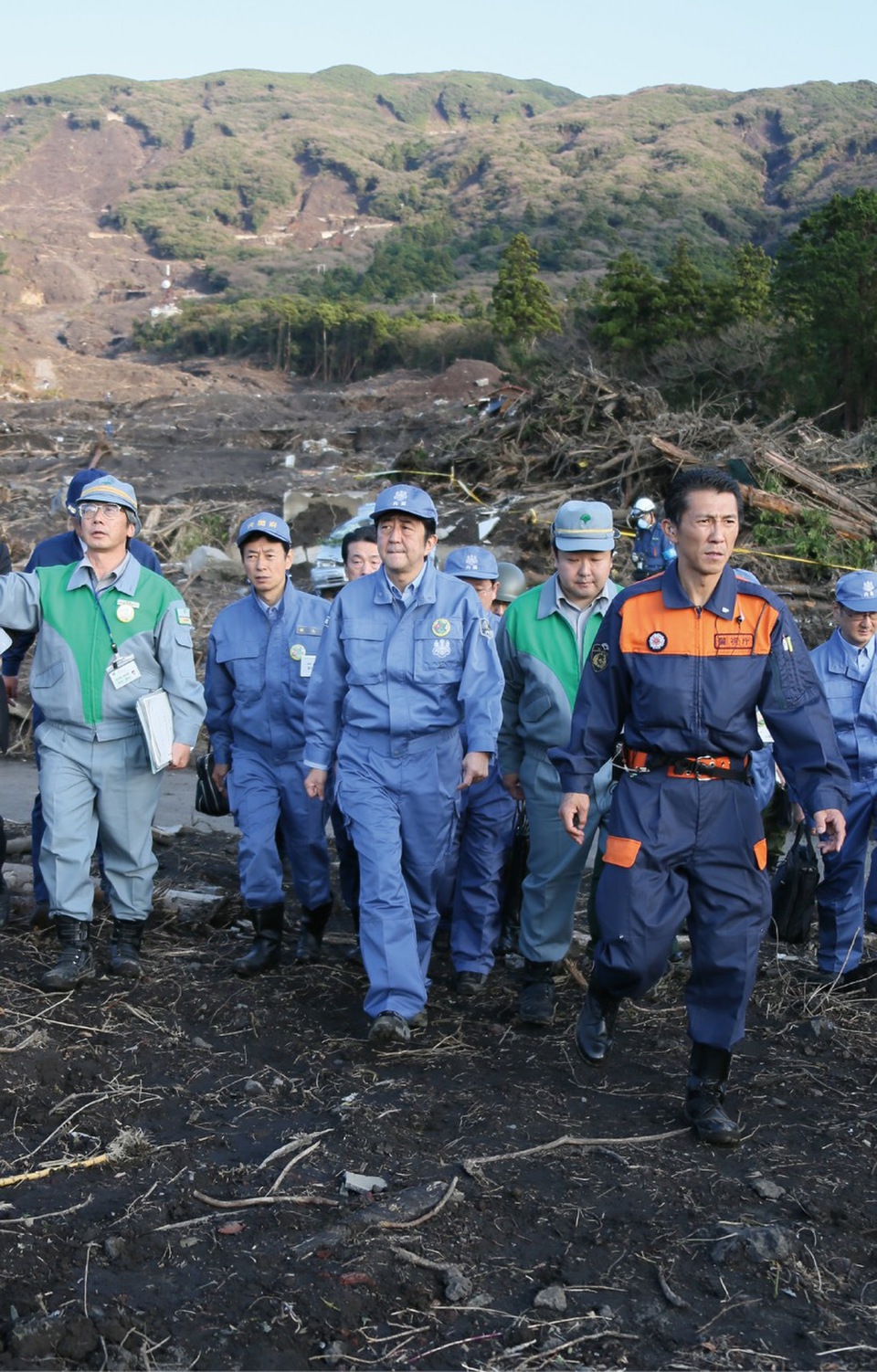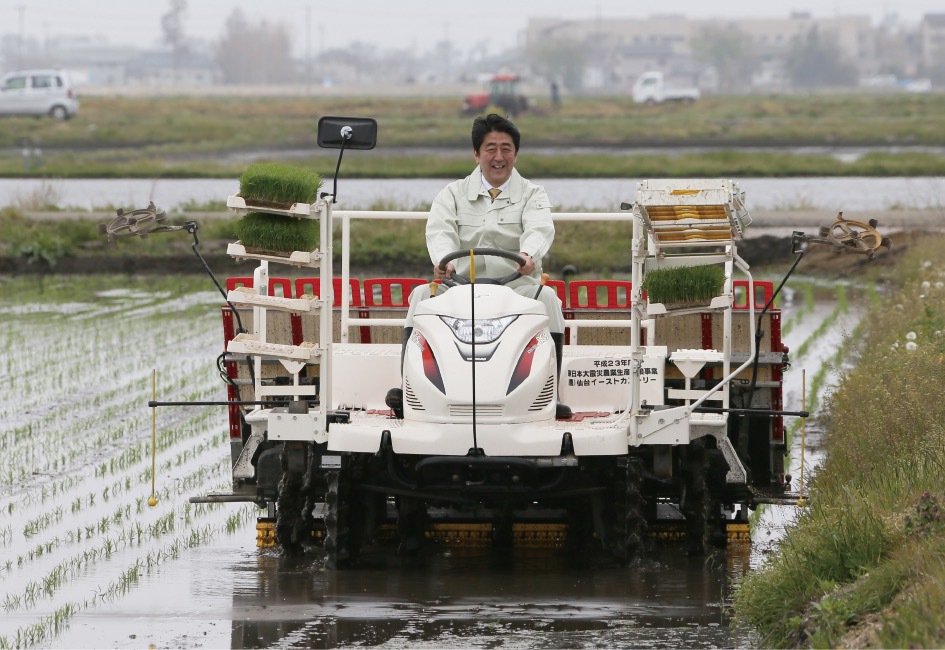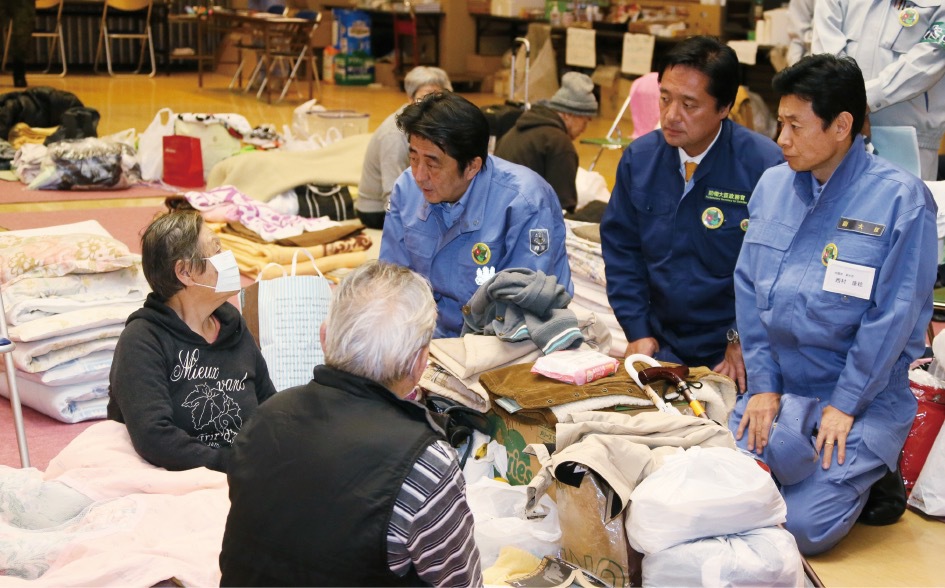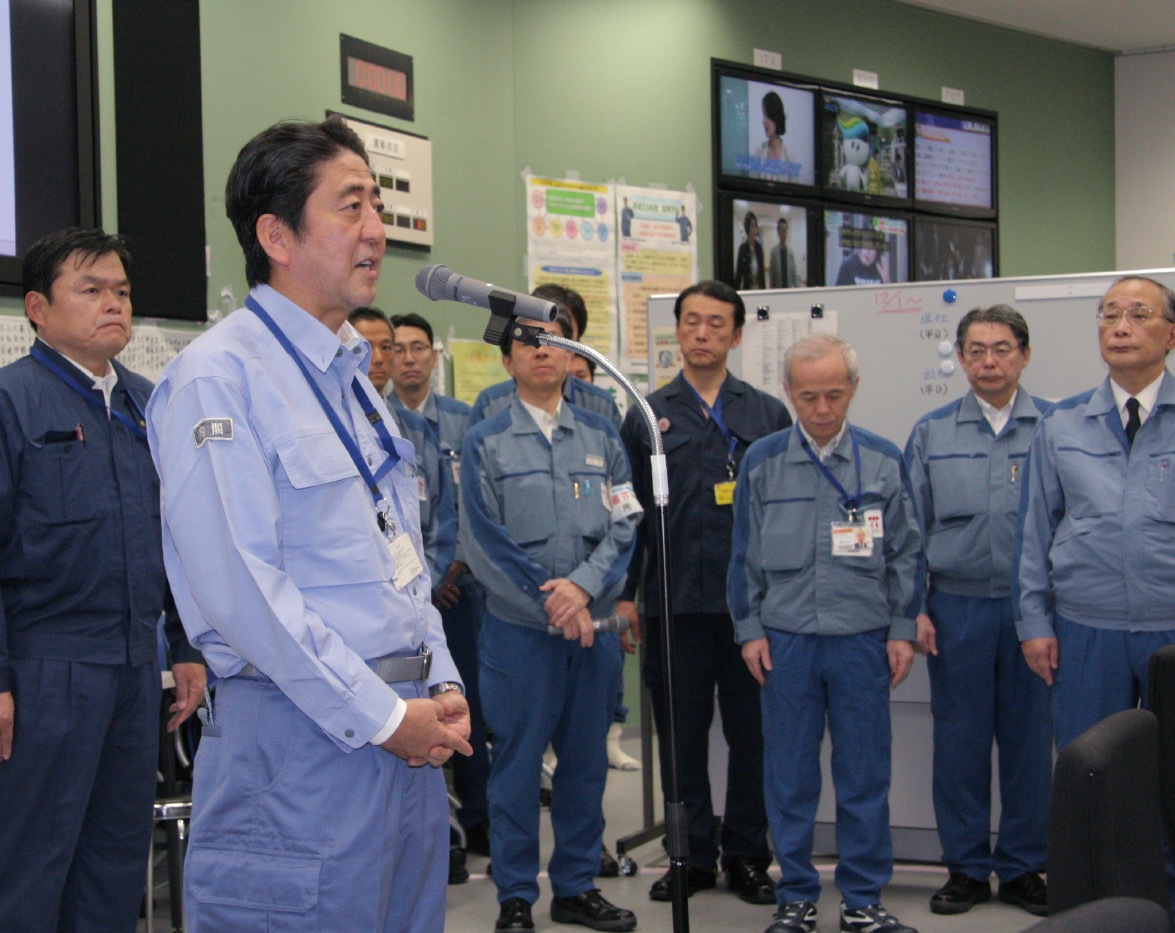These photographs are a record of the various meeting with the Prime Minister since he assumed the highest office in December2012until January2014. Prime Minister Abe has been able to meet with the leaders of many countries and discuss a variety of issues with them. He expressed his gratitude to the people who kindly greeted him all around the world.
Shaking hands with U.S. President Barack Obama during a Japan-United States Summit Meeting, February 2013.
The Prime Minister walking with other leaders at the G8 Lough Erne Summit, in Northern Ireland, June 2013.
Many leaders from Africa visited Japan for the TICAD (Tokyo International Conference on African Development) held in Yokohama in June 2013.
Offering a silent prayer at the African Union headquarters for the late South African president, Nelson Mandela, January 2014.
The Prime Minister offering greetings during an awards ceremony at the Hudson Institute, a think tank in Washington, DC, September 2013.
The Prime Minister and Prime Minister of Turkey Recep Tayyip Erdogan at the honor guard, part of the welcoming ceremony at the Japan-Turkey Summit Meeting, January 2014.
Prime Minister Abe has been welcomed by many children in each country that he has visited. They sometimes greet him by waving Japanese flags and wearing ethnic dress. They sometimes even play tug of war with him. We hope that they will grow up healthy and strong, and we look forward to the day that they come to visit Japan.
The prime minister was greeted by many children holding flags during a welcoming ceremony in Myanmar, May 2013.
The prime minister meeting members of national women’s basketball team in Mozambique, where he was given a uniform with his name inscribed on it, January 2014.
The prime minister meeting members of national women’s basketball team in Mozambique, where he was given a uniform with his name inscribed on it, January 2014.
Greeted by children looking sharp in their ethnic garments at a welcoming ceremony in Mongolia, March 2013.
At an elementary school in Let Yet San village in Myanmar, the prime minister played tug of war with the children, May 2013. 6.Beautifully dressed children welcoming the prime minister and his wife with bouquets at the airport in Côte d’Ivoire, January 2014.
Beautifully dressed children welcoming the Prime Minister and his wife with bouquets at the airport in Côte d’Ivoire, January 2014.
Receiving a letter from children during his observation tour of public housing for disaster victims in Miyagi Prefecture, July 2013.
In July 2013, the Prime Minister is seen offering prayers for the people who died in the area devastated by the tsunami that hit Iwaki City, Fukushima Prefecture on March 11, 2011.
With diplomats resident in Tokyo from various Muslim countries at the iftar (the evening meal to break the fast) held by the Prime Minister at the close of Ramadan. The kimonoed man on the Prime Minister’s left is Osunaarashi from Egypt, the first sumotori from Africa and from a Muslim country in professional sumo, Japan’s national sport, July 2013.
It is important for the government not only to offer support for the reconstruction of the disaster-hit regions but also to venture to those areas to listen to what the local people have to say and to encourage them. Moreover, engaging in some public relation saimedat both Japan and the world about the industries that have recovered is important as well. Prime Minister Abe’s policy is not simply to take an active leadership role but also to visit the disaster-struck areas, observethings with his own eyes, and walk together hand-in-hand with the locals.
Observing the state of damage to Izu-Oshima Island, a part of greater Tokyo, which was hard hit by heavy rains, October 2013.
Rice paddies that took in seawater damage from the tsunami of March 2011 in Sendai City, Miyagi Prefecture, have been restored. Here the Prime Minister rides a tractor to help with planting the paddies, May 2013.
Visiting a shelter for displaced persons during his observational tour of the great rainstorm damage in Izu-Oshima, October 2013.































































































































